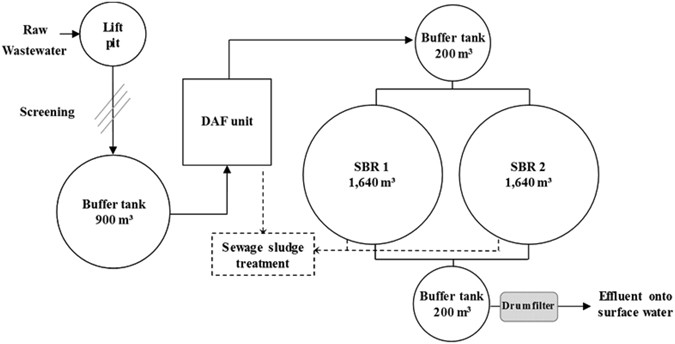Dairy Waste Treatment Pdf
All the food processing plants, including multi-product factories, produce wastes in one form or the other. The food products contain a large amount of carbohydrates, proteins, fats and mineral salts. During flushing and washing operation of various process equipment, these nutrients enter the drainage and favor the growth of anaerobic and aerobic bacteria. As a result the flushed water emits obnoxious odour and can become a disposal problem as such in the municipality sewerage.13.2 Definition of Waste Management. Cracking gmat princeton review.
These refer to those wastes which are obtained in solid form either as a result of processing or are generated during maintenance. Examples are:Minute particles in the exhaust air coming out of a drier,Solid ghee residue in ghee section,Ash from Boiler, if solid fuel is being used,Packaging section, where considerable packaging materials may be discarded in the form of LDPE films, cartoons, bottles etc.Wastes generated by adverse events. (Explosions, fire etc.).Damaged and contaminated equipment and contaminated soil.13.3.1.2 Liquid wastesThese refer to those wastes which are obtained in liquid form as a result of processing, cleaning, flushing etc. The wastes resulting from processing may include un-reacted raw materials, impurities or byproducts generated in process because of operational deterioration, e.g., if the milk is not pasteurized at the right time and if it becomes sour then it will be dumped in the drain.
Water used for cleaning purposes, acid, and lye as used in the CIP also comes under these wastes.13.3.1.3 Oily wastesThese wastes results from the leakage in compressors, hydraulic machines, crankcase, and coolant leakage and motors where oil is required for lubrication. These wastes are differentiated from liquid wastes because they need a different disposal method.13.3.1.4 Gaseous wastes/water vaporsThese wastes refer to those released in the air in the form of gases or volatile vapors. The obnoxious fume from the chimney is a gaseous waste and pollutes the environment to a major degree.
This chimney fuel consists of various gases like CO2 and CO. Apart from it; the refrigerant leakage from pipe lines of the compressors also comes under this category.
Gaseous wastes from processing plants include the water vapors formed in a concentrating section. These vapors increase the relative humidity of the surrounding and the energy they carry with them is wastage to the plant. Steam leakage from various points decreases the life of the tees and knobs used for regulation purpose, nuts and bolts because all of these corrode with time.13.4 Waste MinimisationAs per Industrial Waste Management Policy premises which are subject to works approval require waste management plans incorporating waste minimisation. Each dairy plant should therefore assess opportunities for reducing waste arising from its operations.

Waste reduction measures may include:. Reducing use of water,.
Reducing use of chemicals,. Recycling water and chemicals,. Recovery and reuse of product from first reuse,. Reuse/reprocessing of off-spec material,. Recovering and reusing spilled raw materials and products.13.4.1 Process Control. Dairy configuration and the products made affect the nature and concentration of dairy wastes. The amount of product lost depends on design and operational factors including:.
The range of process technologies in use. The availability of adequate process monitoring, and plant and procedure alarms/interlocks. The availability of automated operation – especially automated clean-in-place (CIP) systems and procedures.
The level of management and operator commitment, training and efficiency. The level of routine equipment maintenance. This includes the deliberate discharge of unwanted materials such as whey, spent cleaners and diluted product not thought to be worth recovering. Liquid milk production may lead to the generation of odour, wastewater, noise and solid waste.
Dairy Waste Treatment Pdf Online
Best practice involves processing the predominant by-products such as whey, buttermilk and skim milk, into high value products like skim milk powder (SMP), buttermilk powder (BMP), whey powder, whey protein concentrate and casein, rather than being used as low value animal feed/fertilizer or being dumped as waste. Cream and butter are viscous and fatty and stick to equipment surfaces much more strongly than liquid milk, increasing the problem of removing residues. Hot water is an effective way to remove residual butterfat from cream processing, butter making equipment and ghee making equipment but the water temperature must not be too high (.